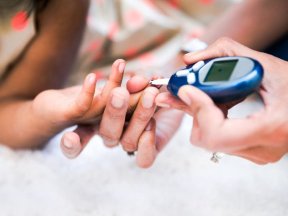

Diabetic peripheral neuropathy, or DPN, the nerve damage caused by high blood sugar levels and other factors, affects about 60 to 70 percent of young people with diabetes. Now, new findings published in Diabetes Care suggest that high and alarming DPN rates among young people with diabetes are linked to the duration of the disease and unaddressed, modifiable risk factors, such as poor glucose control, smoking and dyslipidemia, reports Medscape. For the assessment, researchers at the University of Michigan, Ann Arbor examined data on 2,000 young people (1,734 with type 1 diabetes and 258 with type 2 diabetes) from a previous pilot study, called SEARCH for Diabetes in Youth, to determine the prevalence of and risk factors for DPN. The average age of those living with type 1 diabetes was 18 years and the duration of the disease was 7.2 years compared with 22 years and 7.9 years for those with type 2 diabetes. In addition, the hemoglobin A1c (HbA1c), an average measurement of a person’s blood sugar levels during a period of time, was 9.1 percent in people with type 1 diabetes and 9.4 percent in those with type 2 diabetes.

Findings showed that seven percent of those with type 1 diabetes and 22 percent of those with type 2 diabetes developed DPN that researchers associated with smoking and dyslipidemia (an abnormal amount of lipids, or fats, in the blood). In addition, young people with type 1 diabetes and DPN were significantly older than those without the disorder (21 years versus 18 years) and had a longer duration of diabetes (8.7 years versus 7.8 years). Scientists also noted that DPN risk doubled with each five-year increase in duration of diabetes in both groups. But while blood sugar control was significantly linked to DPN risk for people with type 1 diabetes, for those with type 2 diabetes this association wasn’t remarkable. Researchers concluded that clinicians must target modifiable factors by urging better glycemic control, treatment of dyslipidemia and smoking cessation to stop the debilitating consequences of DPN in young people, especially those with type 1 diabetes.











